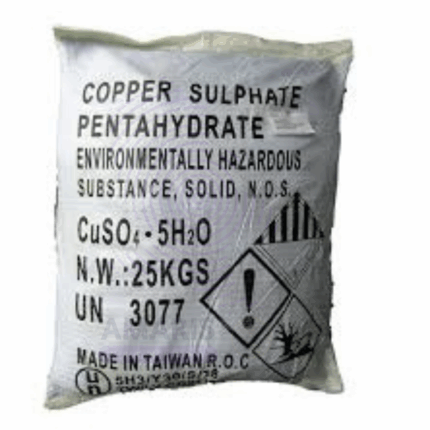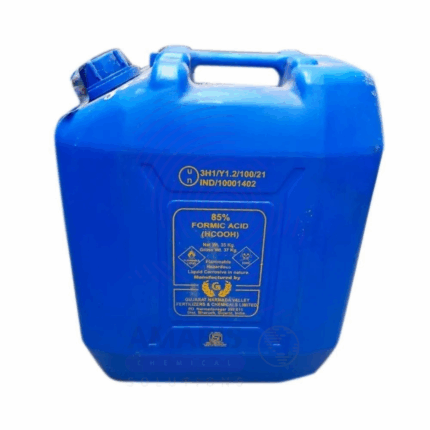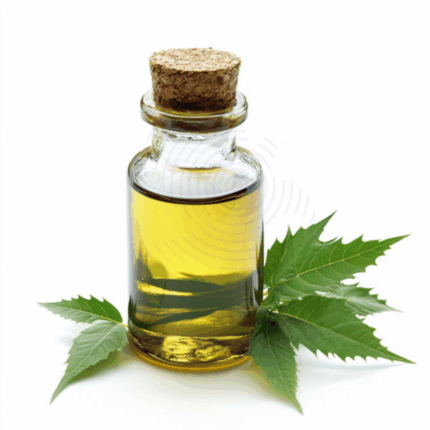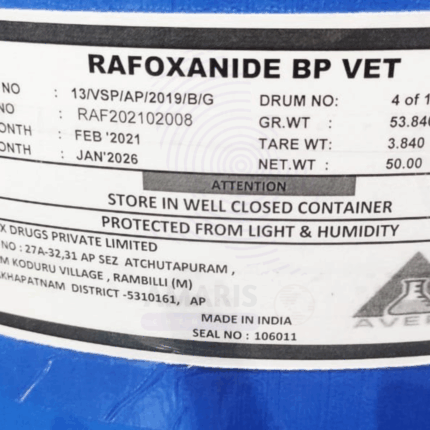“Boric Acid” has been added to your cart. View cart
Malachite Green
Whatsapp Order
Malachite Green is a synthetic organic compound classified as a triarylmethane dye. It appears as a green crystalline powder with a brilliant metallic sheen and is highly soluble in water and alcohol. While originally developed as a textile dye, Malachite Green is widely used in aquaculture, microbiology, and histology due to its antifungal, antibacterial, and staining properties. It is typically available in two forms: the oxalate and hydrochloride salts. Although effective in many industrial and biological applications, its use in food and veterinary contexts is restricted or banned in several countries due to toxicity concerns.
Description
Table of Contents
Toggle
Malachite Green
Primary Uses
- Aquaculture & Fisheries
- Antifungal Agent: Widely used to treat fungal infections (such as Saprolegnia) on fish eggs and freshwater fish.
- Antiparasitic: Used to control protozoan parasites like Ichthyophthirius multifiliis (“Ich”) and other external infections in ornamental and aquaculture species.
- Disinfectant: Applied to tanks, nets, and water systems to reduce microbial load and prevent disease outbreaks.
- Textile Industry
- Dye for Silk, Wool, and Leather: Used for direct dyeing of protein-based fibers due to its bright green color and affinity for animal-based substrates.
- Mordant Dyeing: Utilized in combination with mordants to dye cotton and cellulose fibers.
- Colorant in Paper and Ink: Occasionally used for coloration of specialty papers and inks.
- Biological and Laboratory Applications
- Microbiological Staining: Employed as a counterstain in bacterial spore staining (e.g., Schaeffer-Fulton method).
- Histological Dye: Stains tissues and cell components, particularly nuclei and cytoplasm, in microscopy.
- DNA Staining: Sometimes used in gel electrophoresis staining protocols.
- Analytical Chemistry
- Redox Indicator: Functions as a redox indicator in titrations and various analytical procedures due to its color change on oxidation/reduction.
- Adsorption Studies: Common test compound in dye adsorption experiments for environmental and chemical research.
Secondary Uses
- Biocide in Agriculture
- Occasionally used as a fungicide in seeds and crop protection (now largely phased out due to toxicity).
- Forensics and Detection
- Used in forensic science to detect latent fingerprints or biological samples when combined with other chemicals.
- Art and Pigments
- Historically used in art for green pigments in inks and paints (now replaced with safer alternatives).
- Education & Training
- Demonstration chemical in school laboratories for redox reactions, dye behavior, and biological staining.
PRODUCT KEY FEATURES
- Basic Identification Attributes
- Chemical Name (IUPAC): [4-[(4-dimethylaminophenyl)-phenyl-methylene]-N,N-dimethylaniline] chloride
- Common/Trade Name: Malachite Green
- CAS Number: 569-64-2 (oxalate); 2437-29-8 (hydrochloride)
- HS Code: 3204.13.00
- Synonyms: Basic Green 4; Aniline Green; Diamond Green B; Victoria Green B; C.I. 42000
- Physical & Chemical Properties
- Physical State: Crystalline powder
- Color & Odor: Deep green; odorless
- Solubility: Soluble in water and alcohol
- Melting Point: 150–160 °C (decomposes)
- Molecular Formula: C₂₃H₂₅ClN₂ (hydrochloride salt)
- Molecular Weight: ~364.91 g/mol
- pH (1% solution): ~4.0–6.0
- Stability: Stable under normal storage; sensitive to light and heat
- Safety & Hazard Attributes
- GHS Classification:
- Acute Toxicity (Oral) – Category 3
- Eye Irritation – Category 2A
- Skin Sensitizer – Category 1
- Aquatic Toxicity – Very toxic to aquatic life with long-lasting effects
- Toxicity:
- Known to be toxic if ingested or absorbed; linked to mutagenic and carcinogenic effects in lab studies
- Banned in food fish production in many countries
- Exposure Limits: No established TLV, but minimize exposure
- Carcinogenicity: Suspected carcinogen (animal studies)
- Storage & Handling Attributes
- Storage Conditions: Store in a tightly sealed container in a cool, dry, well-ventilated area; protect from light
- Container Type: HDPE or glass containers, UV-resistant if long-term storage
- Shelf Life: 2–3 years under proper storage
- Handling Precautions: Avoid inhalation and skin contact; do not release into environment
- Regulatory & Compliance Attributes
- Banned for use in aquaculture and food-producing animals in EU, US, and several other jurisdictions
- May still be used under veterinary supervision in ornamental fish
- Subject to REACH restrictions and classified as hazardous under CLP
- Must be labeled with appropriate hazard statements (H301, H411, etc.)
- Environmental & Health Impact
- Biodegradability: Poor; persistent in aquatic environments
- Ecotoxicity: Highly toxic to aquatic organisms
- Bioaccumulation: Potential to bioaccumulate in aquatic species
- Carcinogenicity/Mutagenicity: Evidence from animal studies suggests genotoxic and carcinogenic effects
SAFETY HANDLING PRECAUTIONS
- Safety Handling Precautions
- PPE Required: Chemical-resistant gloves, safety goggles, lab coat, dust mask or respirator for powder
- Handling Guidelines: Avoid dust formation; work in well-ventilated area or fume hood
- Storage Measures: Store away from incompatible substances (oxidizers, acids); protect from UV light
- First Aid Measures
- Inhalation: Move to fresh air; seek medical help if respiratory symptoms occur
- Skin Contact: Wash thoroughly with soap and water; remove contaminated clothing
- Eye Contact: Flush with water for at least 15 minutes; seek medical attention
- Ingestion: Rinse mouth; do not induce vomiting; seek immediate medical assistance
- Firefighting Measures
- Fire Hazards: Combustible but not highly flammable
- Extinguishing Media: Use water spray, foam, CO₂, or dry chemical
- Special Precautions: Use self-contained breathing apparatus and protective gear
- Hazardous Combustion Products: Carbon oxides, nitrogen oxides, toxic fumes
Related products
Ammonium Cupric Chloride
Ammonium Cupric Chloride is a blue-green crystalline inorganic compound composed of copper, ammonium, and chloride ions. It is widely used as a source of copper in agricultural fungicides and bactericides, as well as in electroplating, chemical synthesis, and textile dyeing. Its antimicrobial properties make it valuable for controlling fungal and bacterial infections in plants. Additionally, it serves as a precursor in various industrial and laboratory applications.
Copper Sulphate Pentahydrate
Copper Sulphate Pentahydrate (CuSO₄·5H₂O) is a bright blue crystalline solid widely used as a chemical reagent, agricultural fungicide, and analytical reagent. It consists of copper, sulfur, oxygen, and water molecules, forming a distinctive pentahydrate structure. This inorganic salt is highly soluble in water, exhibiting antifungal, algaecidal, and bactericidal properties. Copper Sulphate Pentahydrate is extensively employed in agriculture, industry, and laboratory applications due to its effectiveness, affordability, and well-understood chemistry.
Cupric Sulphate Anhydrous
Cupric Sulphate Anhydrous (Copper(II) sulfate, anhydrous form) is a blue to green crystalline powder that is highly soluble in water. It is an inorganic compound consisting of copper, sulfur, and oxygen with the formula CuSO₄. Unlike its hydrated counterpart (CuSO₄·5H₂O), the anhydrous form contains no water molecules. It is widely used in agriculture, industry, and chemical manufacturing due to its fungicidal, algicidal, and chemical reactivity properties. The compound serves as a precursor to many copper salts and catalysts.
Cupric Sulphate Pentahydrate
Cupric Sulphate Pentahydrate (Copper(II) sulfate pentahydrate) is a bright blue crystalline solid with the chemical formula CuSO₄·5H₂O. It is the hydrated form of copper sulfate and is highly soluble in water. This compound is widely used in agriculture, chemical manufacturing, and laboratory applications due to its fungicidal, algicidal, and micronutrient properties. The pentahydrate form is the most common and commercially available, known for its vivid blue color and versatile reactivity.
Formic Acid
Formic Acid (methanoic acid) is the simplest carboxylic acid, typically supplied as an 85% aqueous solution. It is a colorless liquid with a pungent, penetrating odor and strong acidic properties. Formic Acid naturally occurs in insect stings and plant secretions and is widely used in chemical synthesis, agriculture, textile, leather, and rubber industries. The 85% solution balances potency and safe handling for industrial applications. It serves as a preservative, antibacterial agent, and intermediate chemical in numerous manufacturing processes.
Neem oil
Neem oil is a natural vegetable oil pressed from the fruits and seeds of the neem tree (Azadirachta indica). It is characterized by its strong, pungent odor and dark brown color. Rich in active compounds like azadirachtin, nimbin, and fatty acids, neem oil is renowned for its insecticidal, antifungal, and antibacterial properties. It is widely used in organic farming, cosmetics, and traditional medicine for its therapeutic and protective benefits.
Rafoxanide BP Vet
Rafoxanide BP Vet is a halogenated salicylanilide used as a veterinary anthelmintic, specifically effective against liver flukes, gastrointestinal nematodes, and certain ectoparasites in livestock. It works by uncoupling oxidative phosphorylation in parasites, disrupting their energy metabolism and leading to their death. Compliant with the British Pharmacopoeia (BP) for veterinary use, Rafoxanide is widely administered to ruminants like cattle, sheep, and goats. It is commonly formulated in oral drenches, boluses, or feed premixes.
Sulphur Lumps
Sulphur Lumps are solid, crystalline elemental sulfur in chunk or lump form, typically derived from natural sources or by-product recovery processes. Known for their high purity, these lumps are widely used in industrial applications requiring elemental sulfur. Their solid form facilitates easy handling, storage, and transport. Sulphur Lumps are key raw materials in the production of sulfuric acid, fertilizers, vulcanization agents, and various chemical intermediates.


 Preservatives(food)
Preservatives(food) Flavor Enhancers
Flavor Enhancers Acidulants
Acidulants Sweeteners
Sweeteners Antioxidants
Antioxidants Colorants(food)
Colorants(food) Nutraceutical Ingredients (food)
Nutraceutical Ingredients (food) Nutrient Supplements
Nutrient Supplements Emulsifiers
Emulsifiers
 Collectors
Collectors Dust Suppressants
Dust Suppressants Explosives and Blasting Agents
Explosives and Blasting Agents Flocculants and Coagulants
Flocculants and Coagulants Frothers
Frothers Leaching Agents
Leaching Agents pH Modifiers
pH Modifiers Precious Metal Extraction Agents
Precious Metal Extraction Agents
 Antioxidants(plastic)
Antioxidants(plastic) Colorants (Pigments, Dyes)
Colorants (Pigments, Dyes) Fillers and Reinforcements
Fillers and Reinforcements Flame Retardants
Flame Retardants Monomers
Monomers Plasticizers
Plasticizers Polymerization Initiators
Polymerization Initiators Stabilizers (UV, Heat)
Stabilizers (UV, Heat)
 Antifoaming Agents
Antifoaming Agents Chelating Agents
Chelating Agents Coagulants and Flocculants
Coagulants and Flocculants Corrosion Inhibitors
Corrosion Inhibitors Disinfectants and Biocides
Disinfectants and Biocides Oxidizing Agents
Oxidizing Agents pH Adjusters
pH Adjusters Scale Inhibitors( water)
Scale Inhibitors( water)
 Antioxidants(cosmetic)
Antioxidants(cosmetic) Emollients
Emollients Fragrances and Essential Oils
Fragrances and Essential Oils Humectants
Humectants Preservatives
Preservatives Surfactants(cosmetic)
Surfactants(cosmetic) Thickeners
Thickeners UV Filters
UV Filters
 Fertilizers
Fertilizers Soil Conditioners
Soil Conditioners Plant Growth Regulators
Plant Growth Regulators Animal Feed Additives
Animal Feed Additives Biostimulants
Biostimulants Pesticides (Herbicides, Insecticides, Fungicides)
Pesticides (Herbicides, Insecticides, Fungicides)
 Active Pharmaceutical Ingredients (APIs)
Active Pharmaceutical Ingredients (APIs) Excipients
Excipients Solvents(pharmaceutical)
Solvents(pharmaceutical) Antibiotics
Antibiotics Antiseptics and Disinfectants
Antiseptics and Disinfectants Vaccine Adjuvants
Vaccine Adjuvants Nutraceutical Ingredients (pharmaceutical)
Nutraceutical Ingredients (pharmaceutical) Analgesics & Antipyretics
Analgesics & Antipyretics
 Analytical Reagents
Analytical Reagents Solvents(lab)
Solvents(lab) Chromatography Chemicals
Chromatography Chemicals Spectroscopy Reagents
Spectroscopy Reagents microbiology-and-cell-culture-reagents
microbiology-and-cell-culture-reagents Molecular Biology Reagents
Molecular Biology Reagents Biochemical Reagents
Biochemical Reagents Inorganic and Organic Standards
Inorganic and Organic Standards Laboratory Safety Chemicals
Laboratory Safety Chemicals Specialty Laboratory Chemicals(Special Laboratory Equipment)
Specialty Laboratory Chemicals(Special Laboratory Equipment)
 Demulsifiers
Demulsifiers Hydraulic Fracturing Fluids
Hydraulic Fracturing Fluids Scale Inhibitors(oil)
Scale Inhibitors(oil) Surfactants(oil)
Surfactants(oil) Drilling Fluids
Drilling Fluids
 Dyes and Pigments
Dyes and Pigments Bleaching Agents
Bleaching Agents Softening Agents
Softening Agents Finishing Agents
Finishing Agents Antistatic Agents
Antistatic Agents
 Admixtures
Admixtures Waterproofing Agents
Waterproofing Agents Sealants and Adhesives
Sealants and Adhesives Curing Compounds
Curing Compounds Concrete Repair Chemicals
Concrete Repair Chemicals Anti-Corrosion Coatings
Anti-Corrosion Coatings
 Surfactants(cleaning)
Surfactants(cleaning) Builders
Builders Enzymes
Enzymes Solvents (Cleaning)
Solvents (Cleaning) Fragrances
Fragrances
 Electronic Chemicals
Electronic Chemicals Catalysts
Catalysts Lubricants
Lubricants Photographic Chemicals
Photographic Chemicals Refrigerants
Refrigerants Automotive chemicals
Automotive chemicals Pyrotechnic Chemicals
Pyrotechnic Chemicals
 Biodegradable Surfactants
Biodegradable Surfactants Bio-based Solvents
Bio-based Solvents Renewable Polymers
Renewable Polymers Carbon Capture Chemicals
Carbon Capture Chemicals Wastewater Treatment Chemicals
Wastewater Treatment Chemicals
 Pigments
Pigments Solvents(paint)
Solvents(paint) Specialty Coatings
Specialty Coatings Binders/Resins
Binders/Resins Additives
Additives Driers
Driers Anti-Corrosion Agents
Anti-Corrosion Agents Functional Coatings
Functional Coatings Application-Specific Coatings
Application-Specific Coatings
 Fresh Herbs
Fresh Herbs Ground Spices
Ground Spices Whole Spices
Whole Spices Spice Blends
Spice Blends Dried Herbs
Dried Herbs
 Leavening Agents
Leavening Agents Dough Conditioners
Dough Conditioners Flour Treatments
Flour Treatments Fat Replacers
Fat Replacers Decoratives
Decoratives Preservatives(baking)
Preservatives(baking)
 Plasticizers & Softeners
Plasticizers & Softeners Reinforcing Agents
Reinforcing Agents Adhesion Promoters
Adhesion Promoters Vulcanizing Agents
Vulcanizing Agents Antidegradants
Antidegradants Blowing Agents
Blowing Agents Fillers & Extenders
Fillers & Extenders Accelerators & Retarders
Accelerators & Retarders
























